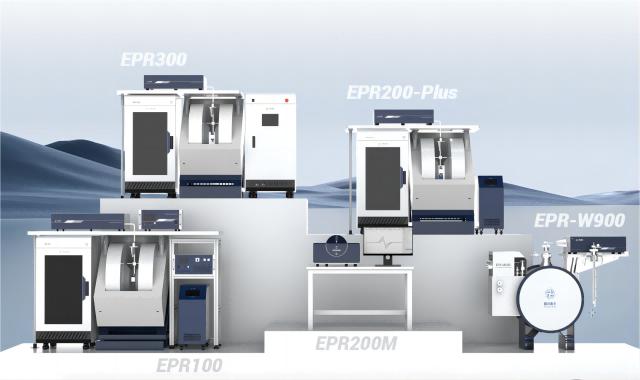This article was last revised in 183 Days ago, some of its contents may have changed. If you have any questions, you can ask the author。
Research Publications
Applied Catalysis B: Environmental: S2-doping inducing self-adapting dual anion defects in ZnSn(OH)6 for highly efficient photoactivity.
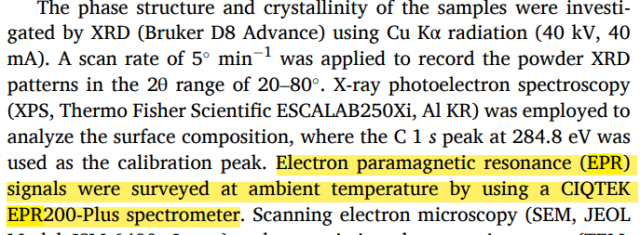
Application of CIQTEK EPR200-Plus Series
AFM: Simultaneous CO2 and H2O Activation via Integrated Cu Single Atom and N Vacancy Dual-Site for Enhanced CO Photo-Production.
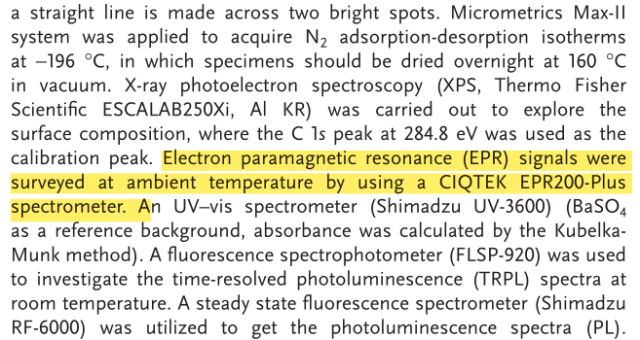
Application of CIQTEK EPR200-Plus Series
Background
In the past century, with the massive growth of population and the continuous expansion of industrial scale, large amounts of traditional fossil energy such as oil, coal, and natural gas have been burned, resulting in problems such as resource shortages and environmental pollution. How to solve these problems has always been the direction of research. With the introduction of policies such as "carbon peaking" and "carbon neutrality", limited resources can no longer meet people's growing development needs, and it is of great significance to seek a sustainable solution. Scientists have focused on many sustainable energy sources. Among clean energy sources such as solar energy, wind energy, hydro energy, geothermal energy and tidal energy, solar energy stands out due to its clean, renewable and huge energy. How to make full use of solar energy and in Solving energy shortages and reducing pollution emissions while applying it to the degradation of pollutants has become a research direction that researchers are committed to.
At present, photocatalytic materials are roughly divided into two categories: inorganic semiconductor photocatalysts and organic semiconductor photocatalysts. Inorganic semiconductor photocatalysts mainly include: metal oxides, metal nitrides, and metal sulfides; organic semiconductor photocatalysts include: g-C3N4, linear covalent polymers, covalent porous polymers, covalent organic frameworks, and covalent triazines Organic framework. Based on the principle of photocatalysis, photocatalytic semiconductors are used in photocatalytic water splitting, photocatalytic carbon dioxide reduction, photocatalytic degradation of pollutants, photocatalytic organic synthesis, and photocatalytic production of ammonia.
Electron paramagnetic resonance (EPR) technology is currently the only method that can directly, in-situ, and non-destructively detect unpaired electrons. EPR technology can directly detect vacancies (oxygen vacancies, nitrogen vacancies, sulfur vacancies, etc.) and doped electrons in photocatalytic materials. The valence state of heterotransition metals. In addition, EPR technology can also detect free radicals such as e-, h+, •OH, O2•-, 1O2, SO3•- generated on the surface of the photocatalyst.
EPR Technology Test Examples
CN (Cu1/N2CV-CN) photocatalytic carbon dioxide reduction
(1) EPR technology directly detects transition metal copper and N2C vacancies in the photocatalytic material CN;
(2)EPR technology supports the analysis results of XAFS. The EPR spectrum shows three peaks corresponding to g‖ of Cu, indicating that the coordination of the Cu center with three identical N atoms is attributed to the ultra-fine interaction between Cu atoms and nearby N atoms.
(3) EPR technology can detect the hydroxyl radicals generated on the surface of the photocatalyst to identify the photocatalyst performance; with the introduction of N2C vacancies, the intensity of hydroxyl radicals increases significantly, promoting the dissociation of water.
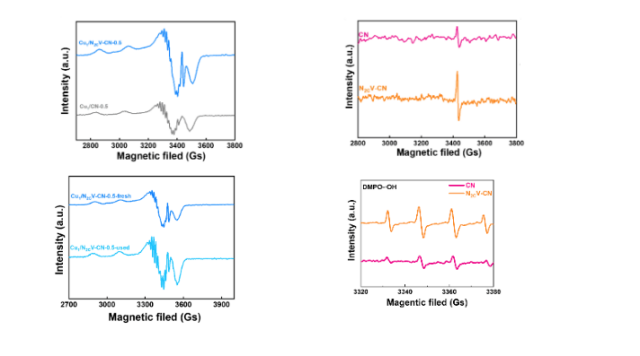
Zn2SnO4 photocatalytic degradation of NO
(1) EPR technology directly detects oxygen vacancies in photocatalytic materials;
(2) EPR technology detects and characterizes hydroxyl radicals, superoxide radicals, and singlet oxygen generated on the surface of photocatalytic materials, verifies the performance of photocatalytic materials, and optimizes the NO degradation process;
(3) As the illumination time increases, the concentrations of O2•-, •OH, and 1O2 increase, which promotes the removal of NO; the photocatalyst BZTO-5 that introduces double anion defect sites produces more O2•-, •OH, and 1O2 than ZTO. The higher equal concentration indicates that the double anion defect site photocatalyst has better photocatalytic performance;
(4) EPR technology can directly prove the results of free radical quenching experiments and directly verify the NO degradation mechanism.
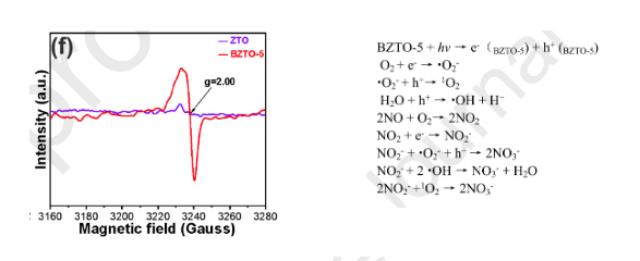
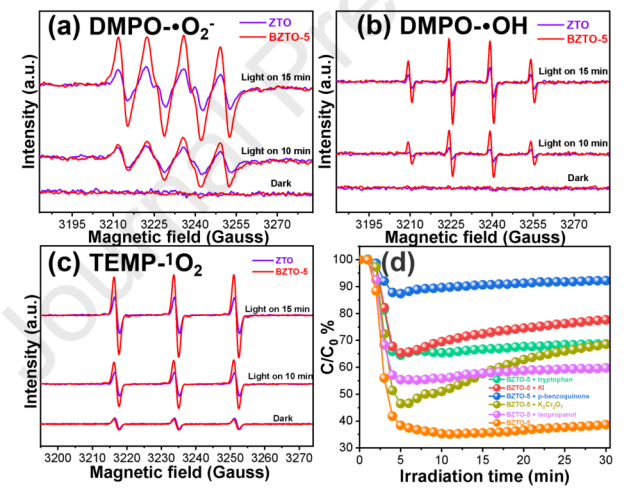
CIQTEK Electron Paramagnetic Resonance Spectroscopy
CIQTEK has currently launched a full range of commercial X-band electron paramagnetic resonance spectrometers with core independent intellectual property rights:
X-Band Pulse EPR Spectroscopy | EPR100
X-Band CW-EPR Spectroscopy | EPR200-Plus
Benchtop EPR Spectroscopy | EPR200M
W-Band High-frequency EPR Spectroscopy | EPR-W900
It has important and extensive applications in the fields of chemistry, environment, materials physics, bio-medicine, food, and industry.
